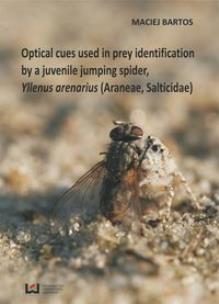- Regulamin
- Koszty dostawy
- Kontakt
- Dziś w ofercie 235 612 produkty
KSIĄŻKI
- Albumy
- Beletrystyka
- Biografie
- Dla dzieci i młodzieży
- Edukacja
- Ekonomia i biznes
- Ezoteryka
- Historia
- Informatyka
- Kalendarze
- Komiksy
- Kryminał i sensacja
- Kultura i sztuka
- Literatura faktu
- Literatura kobieca
- Literatura piękna
- Medycyna
- Nauka języków obcych
- Nauki humanistyczne
- Nauki przyrodnicze
- Nauki ścisłe
- Podręczniki
- Poradniki
- Prawo i administracja
- Przewodniki i podróże
- Psychologia
- Religia
- Sport
- Technika
- Zdrowie i uroda
ZABAWKI
- Artykuły dla niemowląt
- Bączki
- Bujaki i skoczki
- Ciągnij / pchaj
- Dla niemowlaka
- Grzechotki i gryzaki
- Karuzele i pozytywki
- Maty i centra zabaw
- Projektory i lampki
- Sortery i piramidki
- Zabawki
- Edukacyjne i kreatywne
- Figurki
- Klocki
- Lalki
- Pojazdy
- Pluszaki i maskotki
- Sport i rekreacja
- Zabawa w dom
- Zabawki drewniane
- Puzzle
- Do 200 elementów
- 201-500 elementów
- 501-1000 elementów
- Ponad 1000 elementów
- Puzzle 3D
ART. PAP
- Artykuły biurowe
- Artykuły piśmiennicze
- Bloczki i kartki samoprzylepne
- Dziurkacze
- Kalkulatory
- Nożyczki i nożyki
- Skoroszyty
- Teczki
- Wizytowniki
- Zszywacze
- Artykuły szkolne
- Akcesoria szkolne
- Modelowanie
- Notatniki i zeszyty
- Piórniki
- Plecaki i torby
- Pojemniki na śniadanie
- Pomoce naukowe
- Przybory matematyczne
- Przybory rysunkowe
- Upominki i gadżety
- Akcesoria do książek
- Artykuły balowe
- Breloki i zawieszki
- Drobiazgi, różności
- Kubki
- Oferta Świąteczna
- Papeteria, kartki i naklejki
- Skarpetki Many Mornings
- Upominki
GRY
MULTIMEDIA
- Audiobooki
- Beletrystyka
- Biografie i wspomnienia
- Dla dzieci i młodzieży
- Fantastyka
- Filozofia i religia
- Historia
- Literatura faktu i reportaż
- Poradniki
- Sensacja i kryminał
- Filmy DVD/BD
- Animowane
- Biograficzne
- Fantasy
- Horrory
- Komedie
- Romanse
- Science Fiction
- Sensacyjne / kino akcji
- Thrillery
- Muzyka CD
- Alternatywna
- Blues
- Dla dzieci
- Jazz
- Klasyczna
- Piosenka aktorska i poetycka
- Pop
- Rock
- Świąteczna i kolędy
- Akcesoria GSM
- Głośniki
- Kable i adaptery
- Klawiatury
- Myszy
- Słuchawki
PROMOCJE
ZDROWIE
LEGO

Optical cues used in prey identification by a juvenile jumping spider Yllenus arenarius
Autor: Bartos Maciej
Wydawca:
Wydawnictwo Uniwersytetu Łódzkiego
ISBN:
9788375258950
EAN:
9788375258950
oprawa:
Miękka
język:
angielski
liczba stron:
110
rok wydania:
2013
(0) Sprawdź recenzje
Opis produktu
Zasady bezpieczeństwa
Jumping spiders (Salticidae) are known for their unique eyes with exceptionally high spatial acuities, unparalleled among any terrestrial invertebrates. These unusual eyes enable salticids to recognize their prey based purely on vision. The cues used by the spiders to discriminate between their diverse prey are, however, almost completely unknown. It is a mystery, how they cope with the overwhelming diversity of information they can potentially receive. We know very little about the cues a salticid uses to decide whether an object that has entered its visual field is a prey, a mate, an enemy or an inedible object. It is unknown how the salticids that use different predatory techniques against different prey groups classify and target the prey. The purpose of this study is to check if prey cues, such as: body length, motion type, the position of head spot, legs, wings and antennae and the number of these details are used by inexperienced salticids to identify their prey. To accomplish this purpose a euryphagous salticid, Yllenus arenarius, was confronted with selected types of its natural prey as well as with computer-generated animations based on the natural prey, called virtual prey. The findings from the study reveal some general rules used by the spiders to classify their prey in their early predatory interactions. They bring us closer to understanding how neurally constrained animals use information from their environment and how they respond to it.
CENA:
21,43
zł
Cena detaliczna:
29,40 zł
27%
rabatu
Najniższa cena z ostatnich 30 dni: 21,43 zł
Produkt niedostępny
Uwaga!!!
Ten produkt jest zapowiedzią. Realizacja Twojego zamówienia ulegnie przez to wydłużeniu do czasu premiery tej pozycji. Czy chcesz dodać ten produkt do koszyka?


Wybierz wariant produktu
